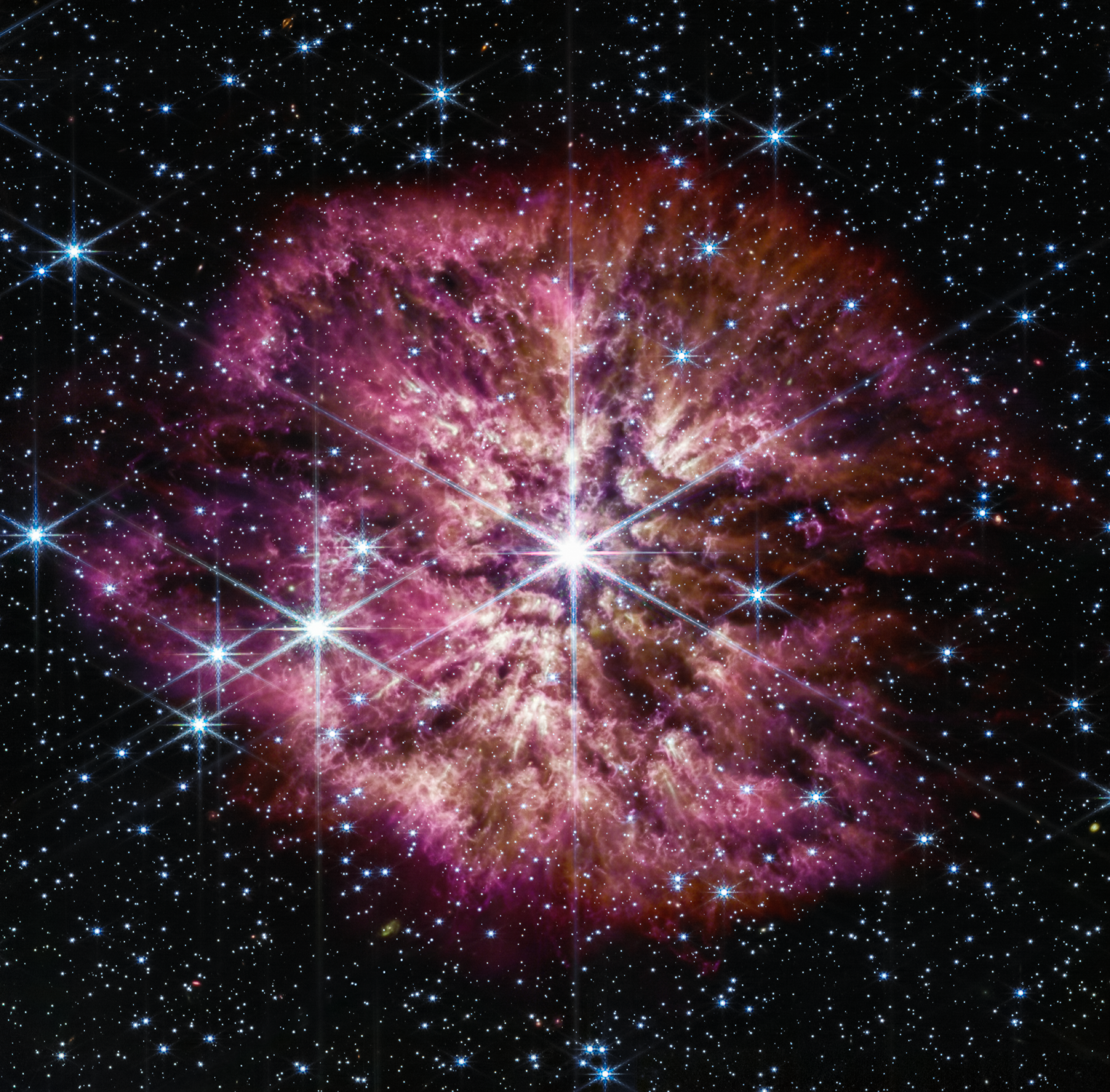One of the first observations made by NASA’s James Webb Space Telescope in June 2022 was the uncommon sight of a Wolf-Rayet star, one of the brightest, largest, and briefly detectable stars known. With the help of its powerful infrared sensors, Webb unveils the star WR 124 in unparalleled detail. The star is located in the constellation Sagittarius 15,000 light-years away.
 The luminous, hot star Wolf-Rayet 124 (WR 124) is prominent at the center of the James Webb Space Telescope’s composite image combining near-infrared and mid-infrared wavelengths of light from Webb’s Near-Infrared Camera and Mid-Infrared Instrument. Image Credit: NASA, ESA, CSA, STScI, Webb ERO Production Team
The luminous, hot star Wolf-Rayet 124 (WR 124) is prominent at the center of the James Webb Space Telescope’s composite image combining near-infrared and mid-infrared wavelengths of light from Webb’s Near-Infrared Camera and Mid-Infrared Instrument. Image Credit: NASA, ESA, CSA, STScI, Webb ERO Production Team
Huge stars sprint through their lifecycles, and only a few go through a brief Wolf-Rayet phase before becoming a supernova, making Webb’s comprehensive studies of this uncommon phase interesting to astronomers. Wolf-Rayet stars are in the process of shedding their outer layers, resulting in their distinct halos of gas and dust.
WR 124 is 30 times the mass of the Sun and has lost 10 Suns’ worth of material so far. When the ejected gas cools and flows away from the star, cosmic dust accumulates and shines in the infrared light observable by Webb.
Astronomers are very interested in the origin of cosmic dust as it could survive a supernova explosion and make up the overall “dust budget” of the universe. Dust is essential for the cosmos’ functioning because it protects forming stars, gathers together to help create planets, and provides a surface for molecules to assemble and cluster together, including those that are the basis of life on Earth.
Despite the several crucial functions that dust serves, the universe nevertheless contains more dust than what is currently anticipated by dust-formation theories. The universe is running a 'dust budget' surplus.
Webb’s discovery offers new avenues for examining features in cosmic dust, which is best viewed at infrared wavelengths of light. Webb’s Near-Infrared Camera (NIRCam) balances the brightness of WR 124’s stellar core with the intricate features in the fainter surrounding gas.
The Mid-Infrared Instrument (MIRI) on the telescope displays the clumpy structure of the ejected material’s gas and dust nebula currently encircling the star.
The question of how much dust is produced in environments like WR 124 and whether the dust grains are large and plentiful enough to survive the supernova and contribute significantly to the overall dust budget could not be explored before the launch of the James Webb Space Telescope. With current data, these queries can be answered.
Astronomers can easily grasp a crucial stage in the early history of the universe by using stars like WR 124 as an analog. The heavy elements now ubiquitous in the modern age, including on Earth, were originally introduced to the young universe by similar dying stars.
Webb’s comprehensive image of WR 124 captures a brief, turbulent period of transition and foreshadows future discoveries that will shed light on the long-obscured secrets of cosmic dust.